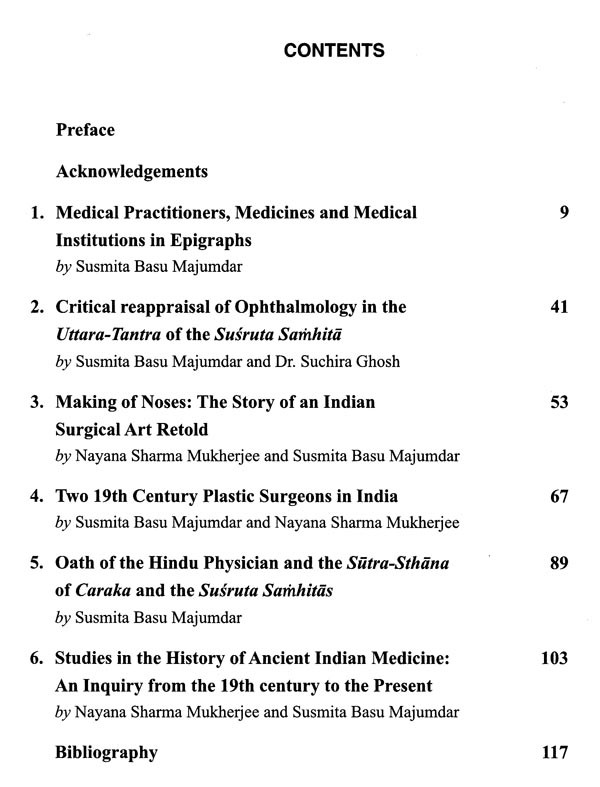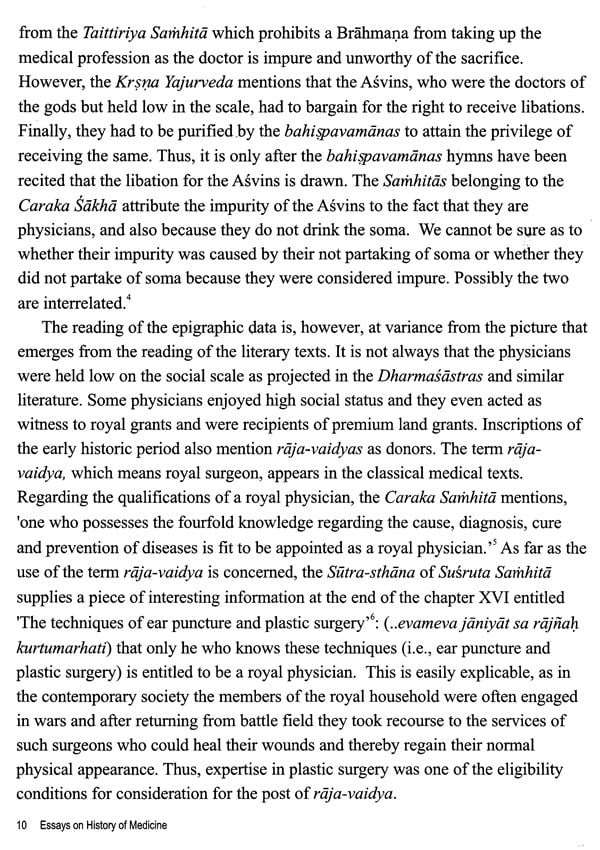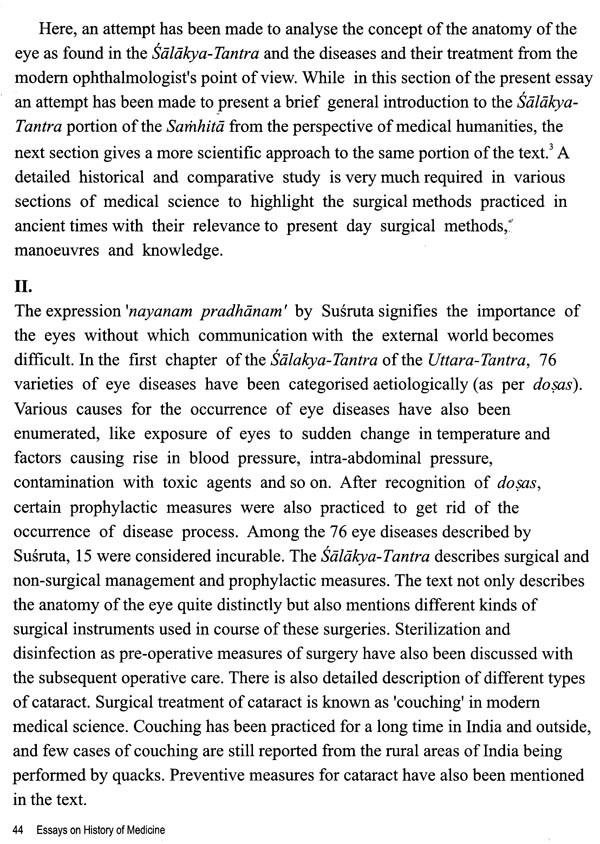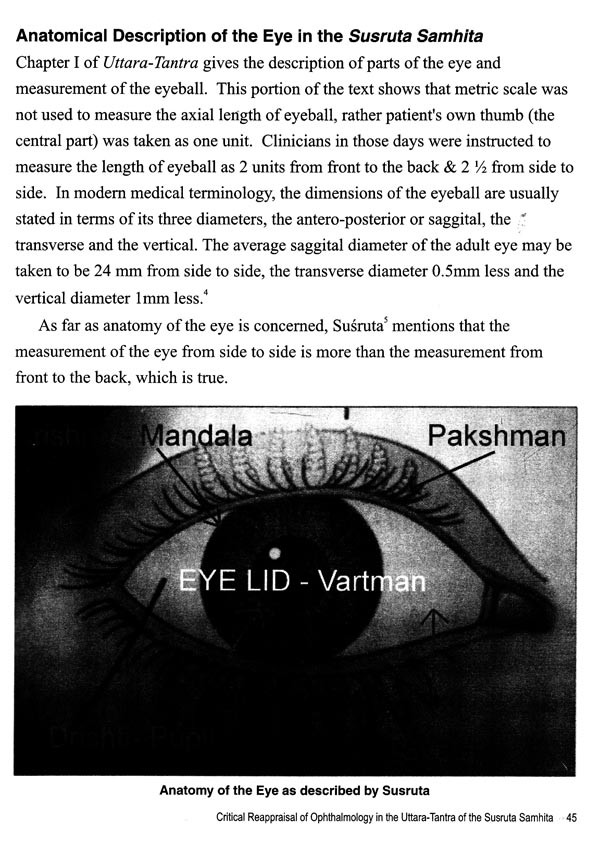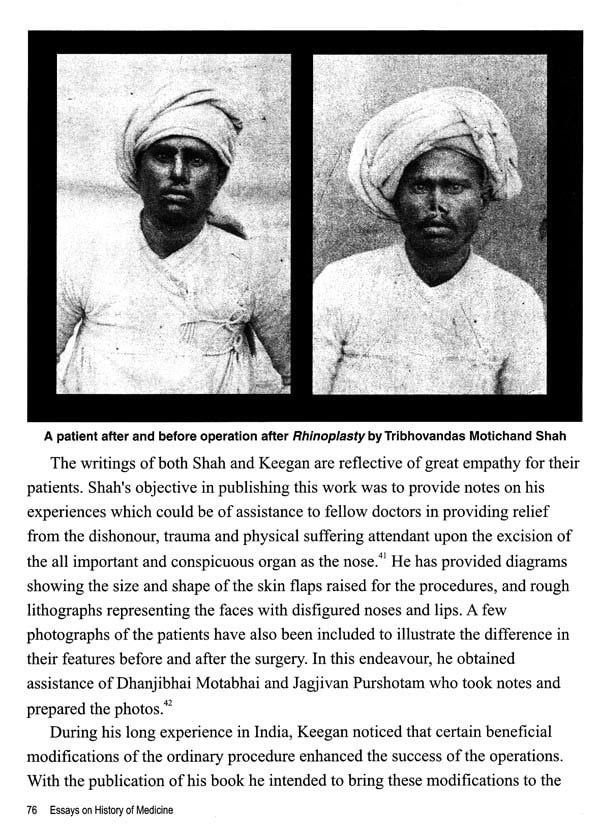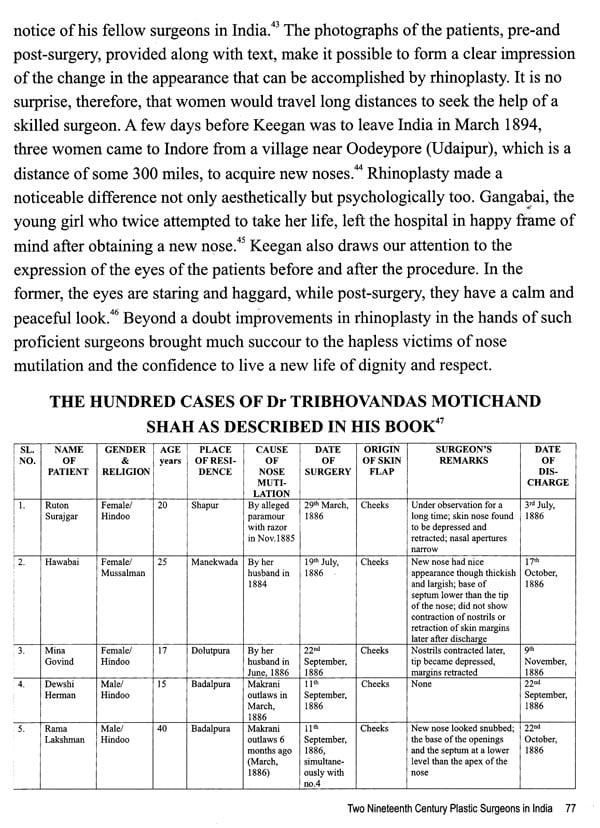
Essays on History of Medicine
Book Specification
| Item Code: | UAC484 |
| Author: | Susmita Basu Majumdar and Nayana Sharma Mukherjee |
| Publisher: | IIRNS Publications Pvt. Ltd |
| Language: | English |
| Edition: | 2013 |
| ISBN: | 9788186786338 |
| Pages: | 128 (Throughout B/W Illustrations) |
| Cover: | PAPERBACK |
| Other Details | 9.50 X 7.00 inch |
| Weight | 300 gm |
Book Description
Comprising a set of six essays on the varied aspects relating to History of Medicine like the position of doctors in India as seen from the epigraphic records, critical study of certain aspects of Ophthalmology as mentioned in the Uttara-Tantra of the Susruta Samhita, history of Rhinoplasty (plastic surgery of nose), experiences of two 19th century surgeons on cases relating to Rhinoplasty, Oath of the Hindu Physician and the Sutra Sthana of Caraka and Susruta Samhitas, and an investigation of the medico-historical literature and writings on the ancient Indian medicine, this book is a welcome addition to the literature on History of Medicine in India.
The past few decades have seen a revival of interest in alternative medicine the world over as people in large numbers are turning away from the conventional allopathic system towards what some consider, safer and more comprehensive healthcare systems. The academic arena too has not been immune to this trend for the history of ancient Indian medicine is receiving increasing attention of scholars. This volume is a collection of six essays, two of which have been presented earlier in seminars and are now being published after necessary revision.
The importance of the medical treatises for any research in this arena is, of course, too well known. The first essay entitled 'Medical Practitioners, Medicines and Medical Institutions in Epigraphs' is based on epigraphic data, a source completely conventional as far as Ancient Indian History is concerned. Inscriptions are a treasure Move of information for varied aspects of Indian history; here this source has been used to highlight the position of doctors, the functioning of hospitals and healing practices in ancient times. An abridged version of the paper was published in the Proceedings of the Indian History Congress, Cabala session, 2008. However, due to the stipulation of the length of a paper, proper justice could not be done to the topic which has extensive data. The paper had dealt with the issue in a chronological and thematic order and there was not much scope for extensive analysis. The present essay in this volume is more detailed and is an attempt to do justice to the wealth of data that we had collected over the years. The analysis shows that the social position of physicians underwent change over the centuries; fluffier, the evidence garnered from these sources in the context of their social status is very divergent from that of the orthodoxy as reflected in the brahmanical normative texts. There is a wealth of data regarding hospitals in the inscriptions which has been studied in depth. The role of temples in the ancient healing system has been highlighted as all medical institutions are mentioned only in religious content as far as this special source material (epigraphs) is concerned. Deterioration in the position of the surgeon as compared to other physicians is another significant fact which emerges from this study.
The next essay is a critical study of certain aspects of Ophthalmology as presented in the supplementary portion of the Susruta Samhita, the Uttara-Tantra. The essayists have attempted to identify certain eye diseases and, a comparative study of the anatomy of the eye as described in the text has been undertaken with that in the modem medical texts. The Susruta Samhita is the earliest Indian text to describe a few remarkable surgical procedures- couching for removal of cataract, cleft lip surgery, ear lobule repair, and the most interesting is the reconstruction of the mutilated nose by rhinoplasty. The knowledge of these procedures found their way to other countries.
The third essay titled 'Making of Noses: The Story of an Indian Surgical Art Retold', attempts to sketch the history of rhinoplasty in India. The skill of surgical reconstruction of the nose and the ear, which according to the Susruta Samhita was the highly valued specialty of surgeons, gradually fell into the hands of barbers and potters. It is not possible to trace the process but the essay takes a look at the interesting case of the first detailed documentation of such a surgery since Susruta. A Parsi bullock cart driver, Cowasjee, became a victim of nose mutilation and had to live in ignominy for a year until it was repaired by a Mahratta potter. The case was reported in 1793/1794 in a contemporary newspaper with an engraved portrait. The essay attempts to address some interesting issues that Cowasjee's case throws up- such as the objective behind publication of the news, omission of the name of the potter who remains unnamed till today, and the impact of Susruta's method in the West which is now known as the 'Indian Method'. Further, an attempt has been made to trace the other cases of rhinoplasty performed in India to demonstrate that the practice of rebuilding of no was a common practice and that Indian surgeons excelled in this art.
The fourth essay is a sequel to the previous one where we have discussed about Iwo books composed by two plastic surgeons in the 19th century. One by a native surgeon from Junagadh, Dr. Tribhovandas Motichand Shah, and the other by Dr. D.F. Keegan (however this one was published in 1900). Shah performed more than 300 cases of rhinoplasty during his life time though his book was composed on the completion of a century. Dr. Keegan described in his book eight such cases that he had performed. Both the books highlight the trauma of the loss of nose by their patients and also provide information about their social identity. This paper attempts at analyzing the works of both these surgeons, and a table giving the details of the patient and their condition has also been added towards the end of the text.
The fifth essay entitled 'Oath of the Hindu Physician and the Sutra Sthana of the Caraka and the Susruta Samhita' is based on a note published in the Caraka Club Journals on the 'Hindoo Oath'. The tern Hindu has been used here as it occurred in the original note in the Charaka Club Journal.
Finally, the last article entitled 'Studies in the History of Ancient Indian Medicine: An Inquiry from the 19th century to the Present' is an investigation of the medico-historical literature and writings on the ancient Indian medicine. This is a preliminary attempt to look at the different approaches of researchers in this field. In the late 18th and only 19th centuries, the western scholars began a systematic study of ancient Indian medicine and surgery with an objective to understand the traditional Indian systems of healing and decoding the ancient medical texts to enlighten the western world about the voluminous indigenous literature which they found to be completely different from there, known system of medicine. The contributions of the Indian scholars with an Indo-centric approach who sought to highlight the potential of the Indian system of medicine may be noticed from the late 19th cranny. This group was initially involved in translating the available primary medical treatises. One can even notice a tendency to push back the antiquity of this discipline which more from a partially a nationalist approach. A third dimension was of those who were neither influenced by the westerners nor had a nationalist bias and were involved in research on different aspects of ancient Indian medicine and other micro studies related to this field. This investigation is only a preliminary attempt and by no means exhaustive. We intend to carry this further in the future.
